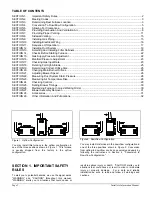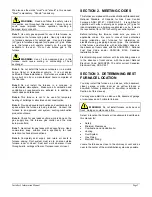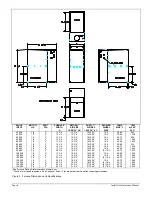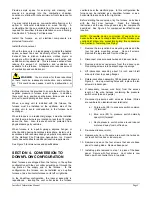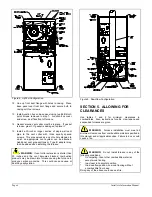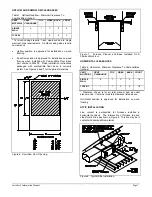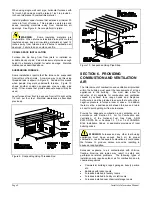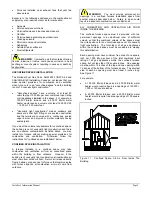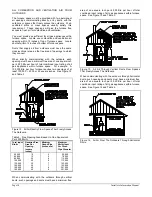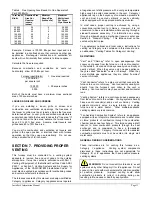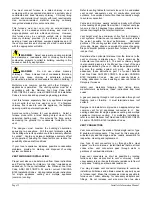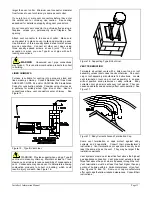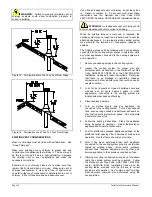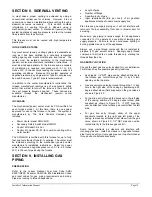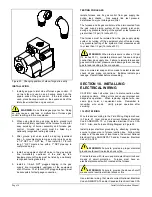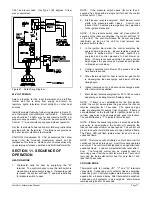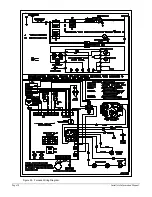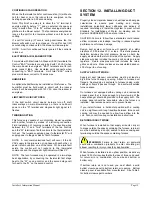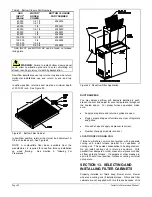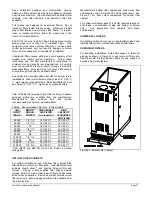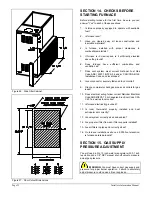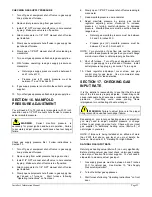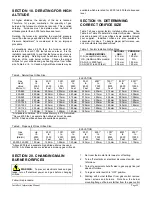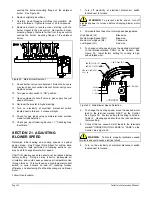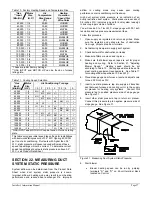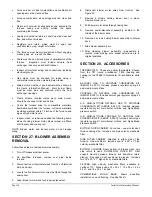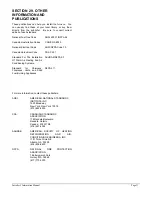
Page 16
Installer’s Information Manual
Figure 20. Changing position of elbow for gas line entry.
INSTALLATION
1. Install gas pipe to inlet side of furnace gas control. If
no inlet elbow is used, use a backup wrench on the
square ends of the gas control. If the inlet elbow is
used, place backup wrench on the square ends of the
inlet elbow rather than on gas control.
WARNING
: Do not thread gas pipe too far. Doing
so may cause a gas leak or malfunction of furnace gas
control resulting in a fire or explosion.
2. When using black iron gas pipe, install a ground joint
union immediately upstream of the furnace to allow for
easy servicing of burner assembly and furnace gas
control. Ground joint union must be listed by a
nationally recognized testing laboratory.
3. After ground joint union install a drip leg (sediment
trap). A convenient way to make a drip leg is by using
a 1/2" NPT to 1" NPT tee. Then install a 1-1/2 inch
long, 1" NPT nipple in tee with a 1" NPT pipe cap to
complete drip leg.
4. Install an equipment shut-off valve in the gas supply
line immediately upstream of the drip leg tee.
Equipment shut-off valve must be listed by a nationally
recognized testing laboratory.
5. Install a 1/8-inch NPT plugged tapping in the gas
supply line immediately upstream of the equipment
shut-off valve. The 1/8-inch NPT plugged tapping must
be accessible for test gauge connection.
TESTING FOR LEAKS
Isolate furnace and its gas control from gas supply line
during leak checks. Gas supply line test pressure
determines how you isolate gas control.
The furnace and its gas control must be disconnected from
the gas supply piping system at the ground joint union
during any pressure testing of the system at test pressures
greater than 1/2 psi (14 inches W.C.).
The furnace must be isolated from the gas supply piping
system by turning off the equipment shut-off valve during
any pressure testing of the system at test pressures equal
to or less than 1/2 psi (14 inches W.C.).
WARNING
: When test pressure is above 1/2 psi
(14 inches W.C.), completely disconnect furnace and gas
control from gas supply line. Failure to isolate furnace and
gas control from test pressure could damage them, causing
gas to leak, resulting in fire or explosion.
Use a commercial soap solution made to detect leaks and
check all gas piping connections. Bubbles indicate gas
leakage. Seal all leaks before proceeding.
SECTION 10. INSTALLING
ELECTRICAL WIRING
CAUTION: Label all wires prior to disconnection when
servicing controls. Wiring errors can cause improper and
dangerous operation. When replacing original wire, use
same type, color, or equivalent wire. Remember to
renumber wire ends. Verify proper operation after
servicing.
115 VOLT WIRING
Wire furnace according to the Field Wiring Diagram shown
in Figure 21, local codes and current National Electrical
Code ANSI/NFPA 70 or Canadian Electrical Code CSA
C22.1. Also, see Furnace Wiring Diagram in Figure 22.
Install proper electrical grounding by attaching grounding
source to green wire in furnace junction box. Follow local
codes or in the absence of local codes, the current National
Electrical Code ANSI/NFPA 70 and/or Canadian Electrical
Code CSA C22.1.
WARNING
: Failure to provide a proper electrical
ground could result in electric shock or fire.
Provide furnace with its own separate electrical circuit and
means of circuit protection. Furnace must have an
electrical disconnect switch located at the furnace.
WARNING
: Failure to provide the above shut-off
means could result in electrical shock or fire.
Use electrical wiring that meets current National Electrical
Code ANSI/NFPA 70 and/or Canadian Electrical Code CSA

